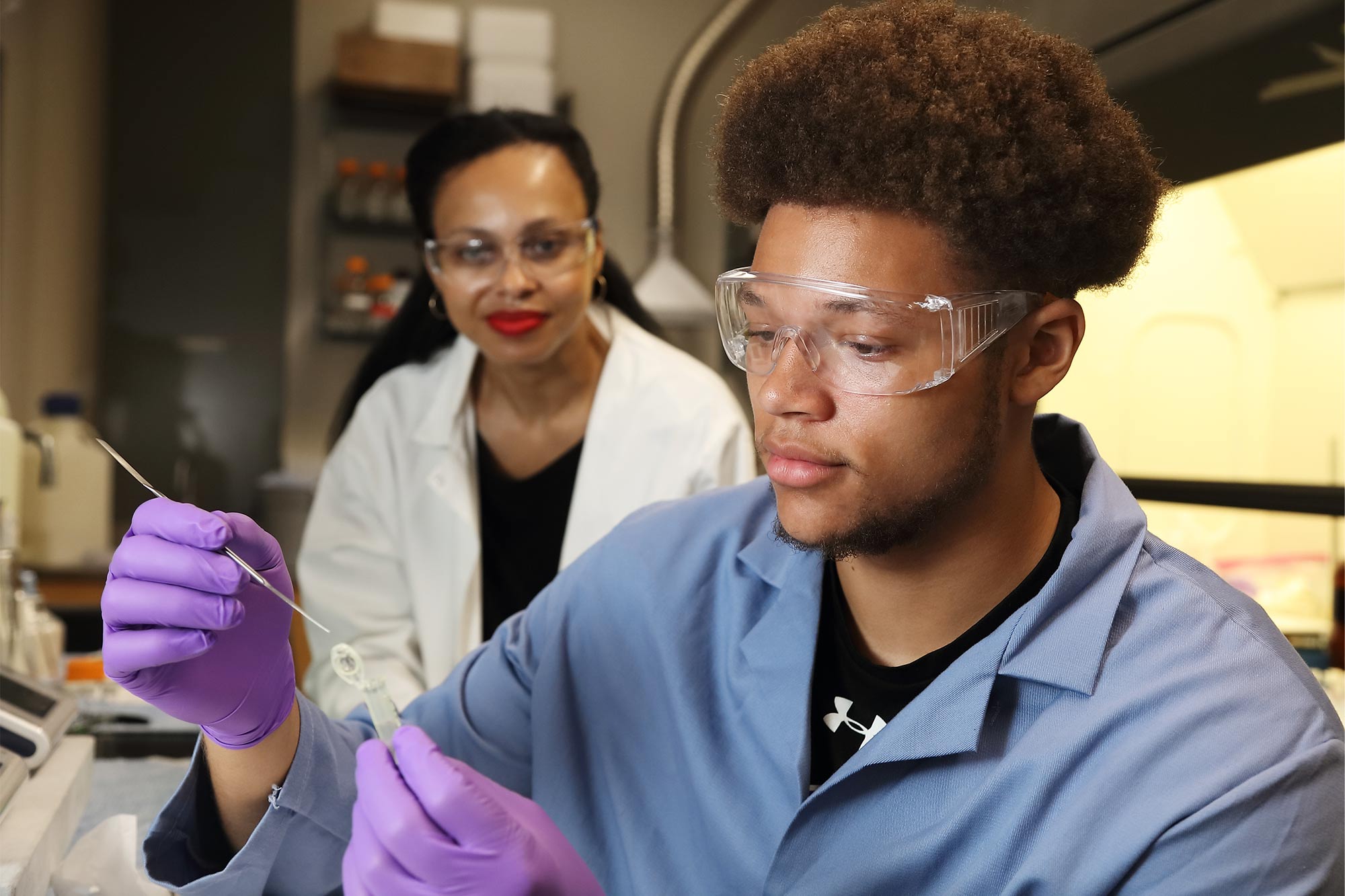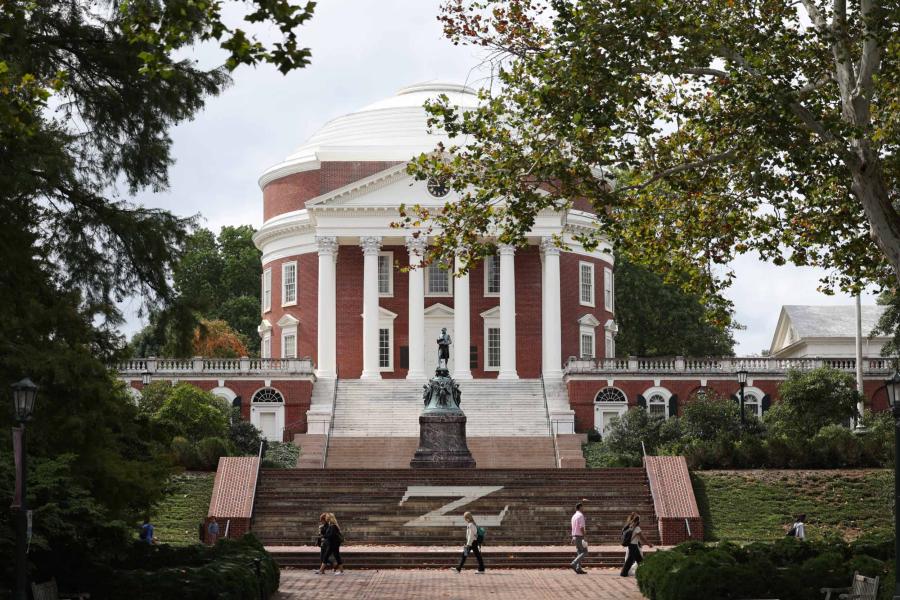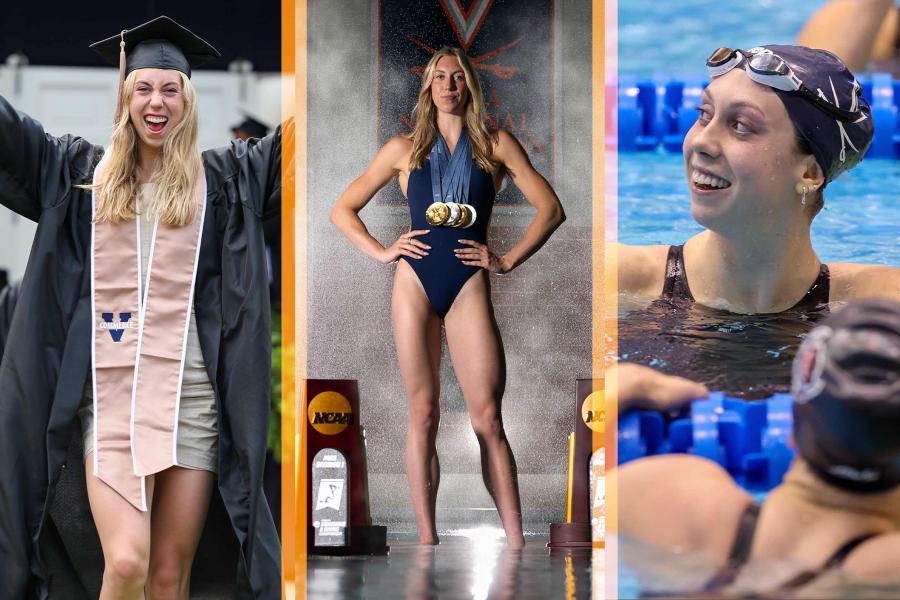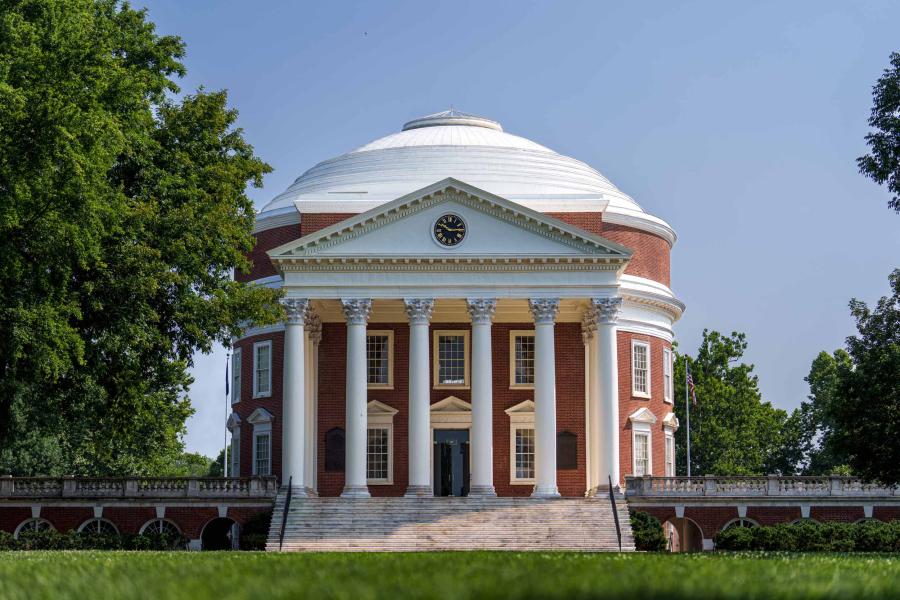Caleb Tyson squinted at clear liquid in a lab vial, where he should have seen solids floating within. Something had gone wrong with the peptide – a string of amino acids – he and his two lab mates were trying to make.
They would have to figure out their mistake and make the peptide again before they could move on to the next step toward their ultimate goal, creating a degradable polyurethane material with promising properties for treating bone tissue injury.
Learning to expect setbacks is part of the point of undergraduate research programs like the one Tyson participated in at the University of Virginia this summer.
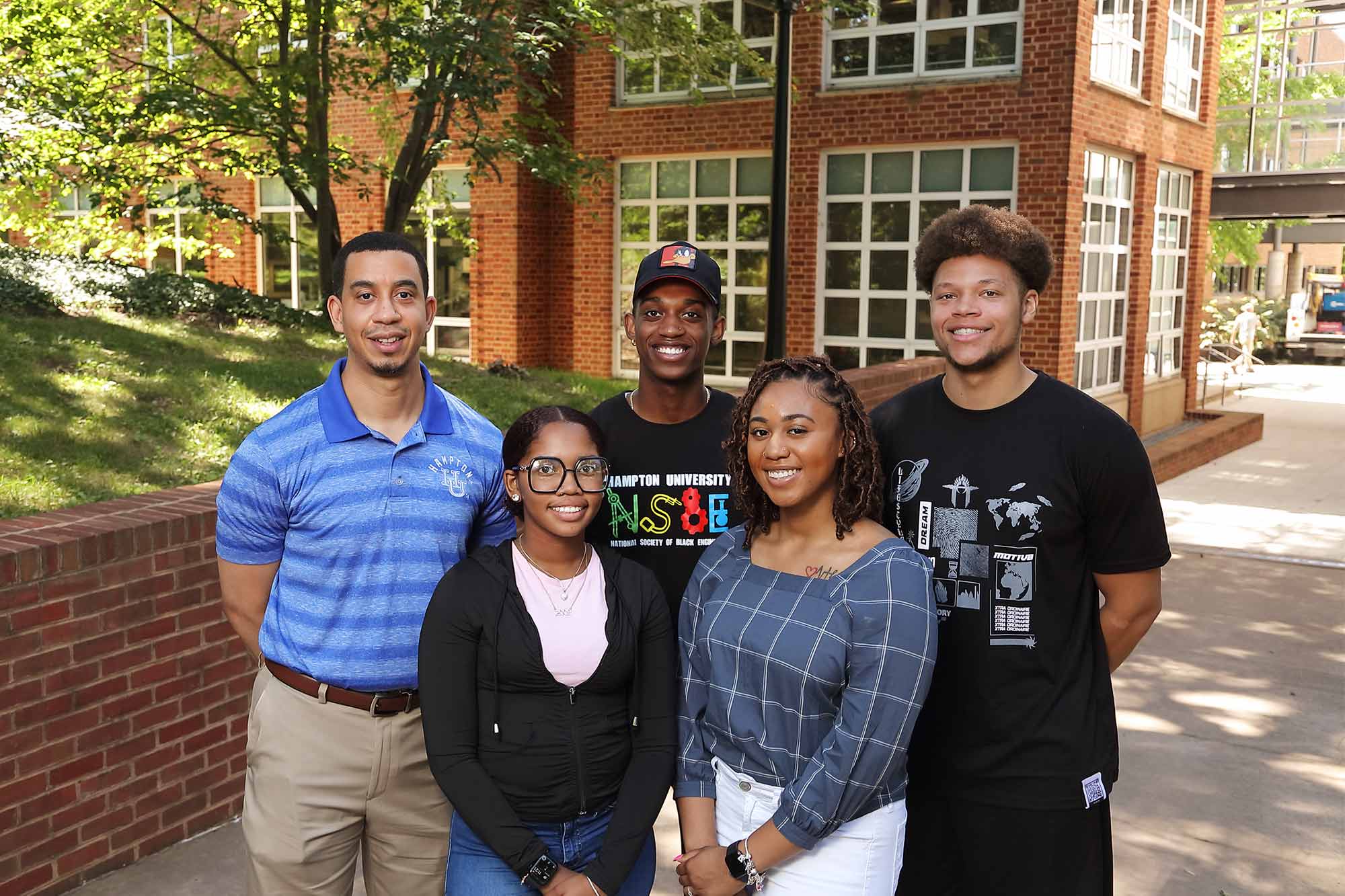
Tyson is a rising junior and a chemical engineering major at Hampton University, a historically Black university in Hampton. He’s spending part of his summer working in a biomedical lab with Lakeshia Taite, an assistant professor of chemical engineering at UVA’s School of Engineering and Applied Science through a new collaboration that both schools hope results in a long and fruitful relationship.
The idea is to offer Hampton University’s chemical engineering majors summer research internships with UVA faculty advisers and graduate-student mentors – and for the Hampton students to continue the projects after they return to their campus.
Along with Tyson, rising Hampton University junior Lauran Pearson is working with associate professor Kyle Lampe and assistant professor Rachel Letteri. Rising Hampton University seniors DessaRae Lampkins and Alex Harmon are working in Lampe’s lab and assistant professor Steven Caliari’s lab, respectively. Taite, Lampe, Letteri and Caliari all specialize in biomaterials and tissue engineering at UVA.
The internship is modeled after the National Science Foundation’s prestigious Research Experiences for Undergraduates program, with an eye toward seeking NSF funding. The faculty are developing an NSF proposal incorporating this summer’s outcomes.
Building relationships with undergraduate programs at other universities has long been on the to-do list of Department of Chemical Engineering chair William Epling, and Hampton University was of particular interest.
“We’re always looking for excellent graduate students, and Hampton has been a source of excellent graduate students to other universities,” said Epling, the Alice M. and Guy A. Wilson Professor of Chemical Engineering. “We’re trying to get them to come to UVA instead.”
Hampton University’s chemical engineering classes typically range in size from three to 12 students, said Hampton associate professor Jerald Dumas, who chairs a department of three faculty. Because their research programs also revolve around biomaterials, tissue engineering or biomedicine, the partnership is a natural fit with UVA’s strengths in those areas.
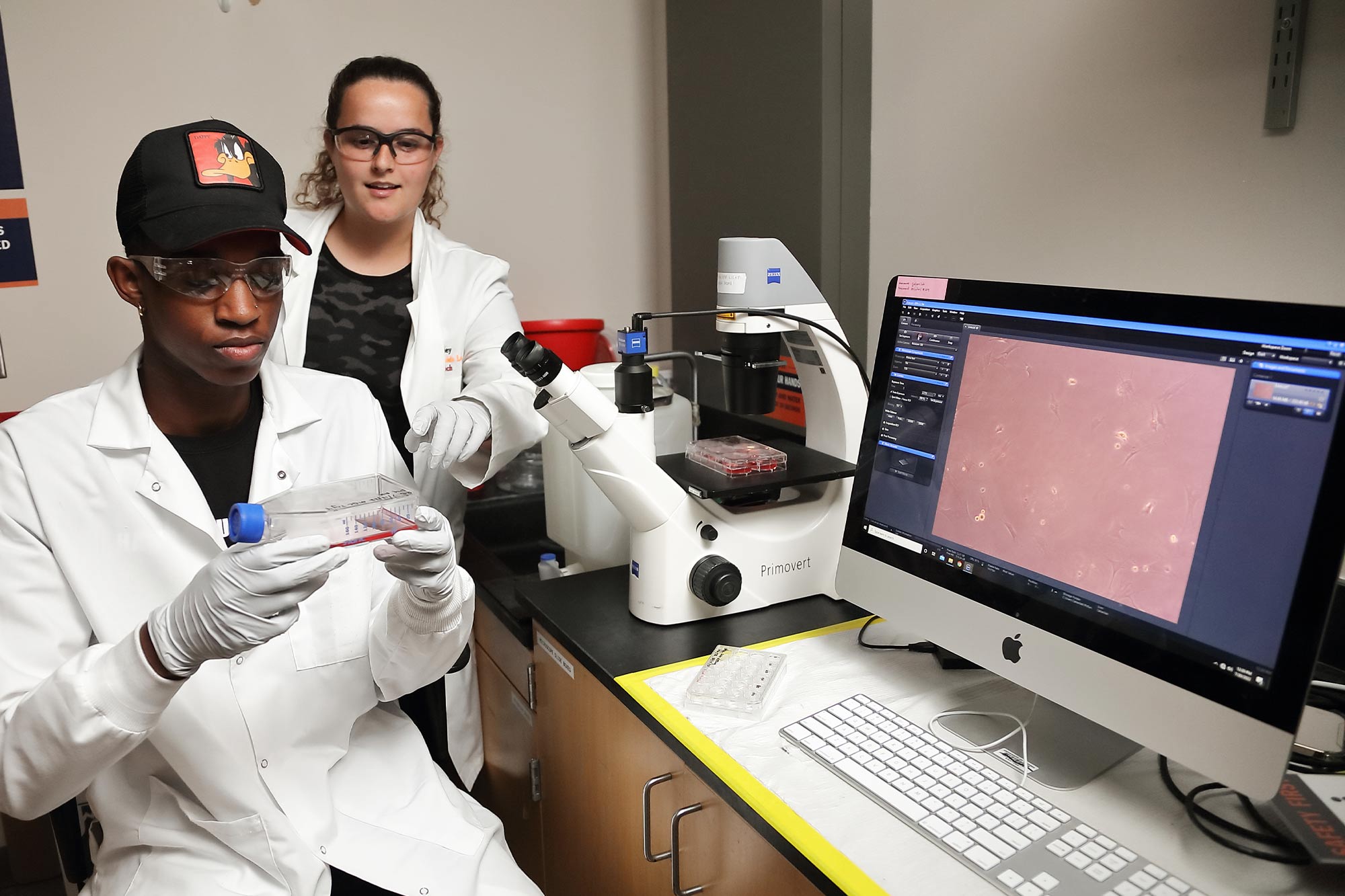
Over the past five years, about 30% of Hampton graduates have pursued doctoral degrees, and some years, the rate is much higher, Dumas said.
“Partnerships that we have with different institutions have been a major factor in our students’ desire to pursue advanced degrees,” Dumas said, noting the many benefits of research experience, including seeing core concepts play out in the lab.
“Like many HBCUs, we’re striving to increase our lab infrastructure,” Dumas said. “Coming here and actually seeing the application of transport or thermodynamics, even if the students have not taken the course, it’s easier when they come back and take the course with me. It helps them to persist in the difficult subject that is chemical engineering.”
The students also return with research skills to help build Hampton’s research capacity.
“When the students come back to the lab, I don’t have to watch behind their backs because they have that experience making a hydrogel or growing a cell culture,” Dumas said.
For Hampton University’s Lampkins, who is eyeing a career in pharmaceuticals after graduate school – as well as running a cosmetics company she has already started – that feeling of competency is big.
“When we learned it and we were able to just do the procedure freely by ourselves, that’s been my favorite part,” Lampkins said. “Like, I really know it and I can do this by myself as a grad student.”
She is working primarily with UVA chemical engineering doctoral student Rachel Mazur, who goes step-by-step and answers questions in detail, Lampkins said.
“Rachel still watches the first couple times, makes sure I’m doing it right,” Lampkins said. “But I feel she’s a really good teacher in that way because she’s still a student technically.”
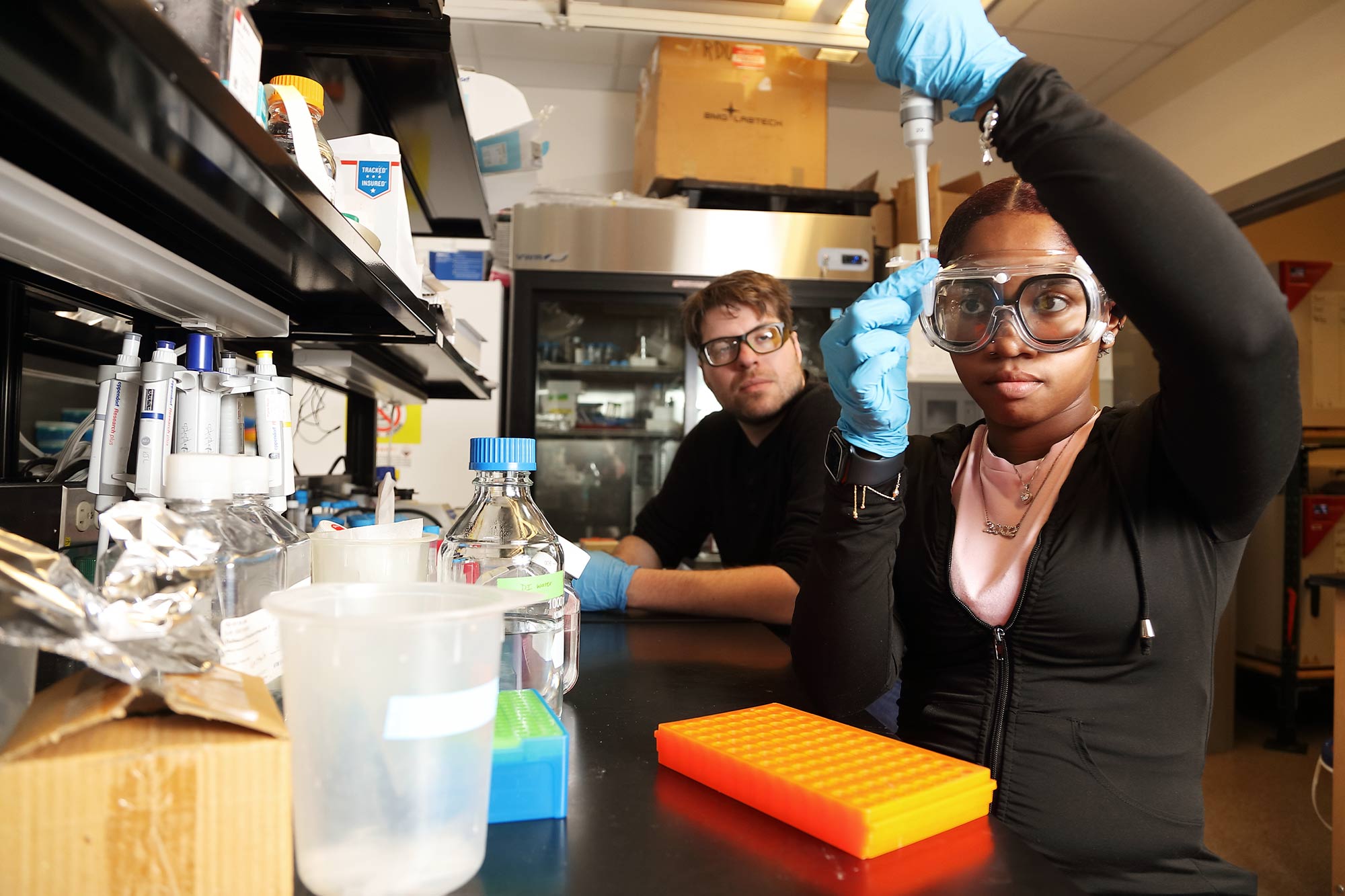
As they’re learning, the students perform essential tasks and take ownership of their work. Cell cultures need to be fed, for example.
“I felt like a mom taking care of my little cell babies,” Pearson said, commenting on the fun part. But her biggest takeaway so far?
“The trials and errors,” she said. “Sometimes I’m like, ‘Ugh, I just want it to work,’ but if you keep trying and trying, it’ll eventually work out. You just have to maybe switch a few things or find a new way to do something rather than the same way someone’s already done it.”
Taite, who is advising and mentoring two UVA undergraduates along with Tyson this summer, said rethinking processes and experiments is one advantage of rubbing elbows with talented but inexperienced researchers.
“They tend to ask questions that you might not consider because you hadn’t taken the time to simplify your idea to the level of a new undergrad just starting in the lab,” Taite said.
Ryann Boudreau, a biomedical engineering doctoral student in Caliari’s lab, said Harmon’s presence has benefited both the research and her.
“Alex asks important questions and brings new ideas to the team,” Boudreau said. “I enjoy collaborating with other students as they enhance the learning environment for everyone. I still have so much to learn, so having Alex to walk through the protocols and experiments with fresh eyes really enhances my learning and mentoring skills.”
Mazur’s mentorship of Lampkins has been similar. At halfway through the internship, Mazur said, “This is the most productive time of the summer, since DessaRae is able to do some tasks like cell culture, smaller assays, etc., without supervision. This frees me up to do other experiments, so we’re effectively getting twice the amount of work done toward the project.”
She also said new data generated by both Lampkins and Pearson could wind up in conference presentations or even journal publications.
“And, with more knowledge of the project, DessaRae has suggested new research directions for the project, which we have plans to follow up on in the future,” Mazur said.
In addition to their primary lab projects, the Hampton students are working with Taite and Dumas on a collaboration to make a polyurethane film using ultraviolet light to “cure” the building-block molecules to form the material, a process called photo crosslinking.
Dumas develops polyurethane materials for orthopedic tissue engineering. Taite’s lab makes soft hydrogels – a clear material resembling Jell-O – designed to promote growth of soft tissue such as blood vessels.
“Polyurethanes are much more elastic, much stronger, tougher than hydrogels,” Taite said. “We’re looking at whether or not we can blend these materials, because my hydrogels are also photo crosslinked.”
Normally when Dumas sends students off for summer research experiences, he doesn’t get to see them in action. This year, he successfully applied to UVA’s STRIVE-C, the Short-Term Research Initiative for Visiting Educators in Cancer, sponsored by the UVA Comprehensive Cancer Center.
The program encourages research partnerships between UVA faculty members of the cancer center and faculty at minority-serving institutions. It does so by providing a host lab at UVA and funding for four weeks to allow the visiting faculty member to do original research.
As a UVA Cancer Center member, Caliari gladly agreed to host Dumas this summer.
“It’s really given me an energy boost with regard to my research,” Dumas said. “Typically, HBCU faculty teach three to four classes per semester, and we are trying to conduct research.
“A partnership like this, with Dr. Taite and Dr. Caliari and other colleagues in chemical engineering, being able to come here and work with the students on research that has synergy with my own really helps me generate ideas, as well as complete projects that I normally do not get a chance to complete,” Dumas continued. “Also, DessaRae and Alex work in my lab. They’re getting extra mentorship I often don’t get a chance to conduct during the normal school year.”
All four Hampton University students were drawn to chemical engineering because of a parent’s influence or illnesses in their families. They’re motivated to find cures so others don’t struggle in the same way as their loved ones.
Harmon found the perfect spot this summer on “Team Muscle” in the Caliari biomaterials lab. When the internship began, he’d been intent on industry after graduation and then a master’s degree, but now he’s considering going straight for a doctorate.
“My aunt’s been battling with heart failure, and I just want to improve the treatment,” Harmon said. “If we could find ways to create regenerative tissue, she wouldn’t have to go through back-to-back surgeries, and she’d be able to live better knowing something’s working, instead of just a temporary fix. So that’s what I’m trying to come up with.”
Media Contact
Article Information
July 8, 2025

